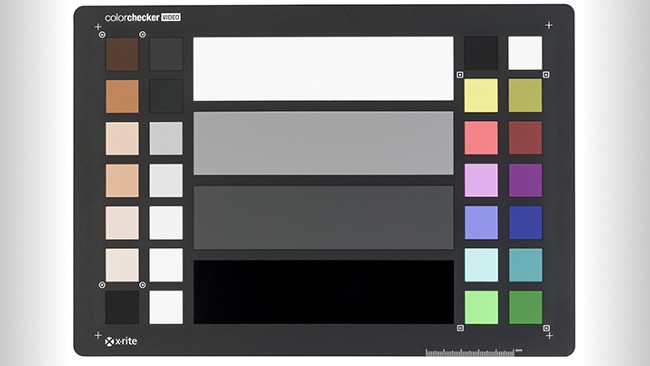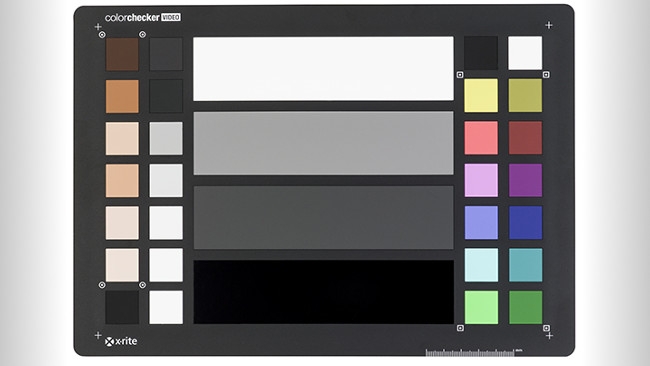
 X-Rite ColorChecker Video
X-Rite ColorChecker Video
We examine the X-Rite ColorChecker Video, an attempt to update an industry standard.
X-Rite's new charts are something that we talked about at IBC, but were asked not to publish until later. Happily, the result is that the public announcement dovetails nicely with our recent discussion of its i1 Display Pro monitor probe in the context of calibration and colour control.
Colour-charting the past
For a while, the company has been the manufacturer of the thing often referred to as a Macbeth chart, for its original developer, but more properly called the ColorChecker. This is the nearest thing the film and TV industry has had to a standard colour chart for some time and the basis, incidentally, of the Television Lighting Consistency Index. The problem with the Macbeth chart is that it was never really designed to be used as a colour reference for film and TV work, at least certainly not with today's technology. The colours displayed on the chart were designed to represent common real-world objects, such as foliage and human skin, as well as providing a neutral grey reference. There are also primary (red, green, blue) and secondary (cyan, magenta and yellow) patches.
This works OK in some circumstances, if only because people have become used to it and because the primary and secondary row, along with the row described rather unhelpfully as "miscellaneous colours," happens to provide reasonably good coverage of the CIE chart in the region of most interest to film and television technicians.
ColorChecker, revamped for modern use
The new ColorChecker Video and pocket-sized Passport version are intended to address a few concerns that X-Rite has raised with the existing de-factor standard. First, the company points out that there are only two skin tone references on the ColorCheckers of old, which doesn't very comprehensively represent the exciting range of shades in which human beings exist. The primary and secondary rows don't have colours which are evenly separated on a vectorscope, as users might reasonably expect (an in-depth discussion of a vectorscope and how it works are out of the scope of this brief piece, but we've covered vectorscopes before in some detail).
One other welcome development is the inclusion of a gloss black, which should provide a markedly better black reference than the non-reflective matte Macbeth black (though not quite as good as a cavity black). There are also half-saturation primary and secondary patches, which ought to be a quick way to check for set-up problems truncating the camera's gamut – the full and partial saturation patches should be well-separated.
There are always problems with designing test charts in that most practical cameras render markedly different signals from the same subject. Although this is beginning to change, with vast improvements in the colour gamut of cameras and displays and the wider use of calibration, there has never really been any great expectation that the image on a monitor will appear precisely the same as it does in reality or even particularly consistent between cameras. When the Academy developed its Color Encoding System, ACES, there was great consternation from manufacturers that it would make all cameras look the same (that was, in fact, never the idea, and it doesn't work that way). For all these reasons, it's difficult to be too specific about how test chart patches should behave when subjected to test and measurement, other than, perhaps, that primaries and secondaries should be sixty degrees apart and that greys should be neutral.
X-Rite's existing charts are popular because everyone knows what they look like; if they're to be replaced by anything, it will have to overcome that particular barrier to acceptance. In essence, though, the choices made are sensible and experience will begin to establish how the charts should behave, even if on a show-by-show basis.
Tags: Production


Comments